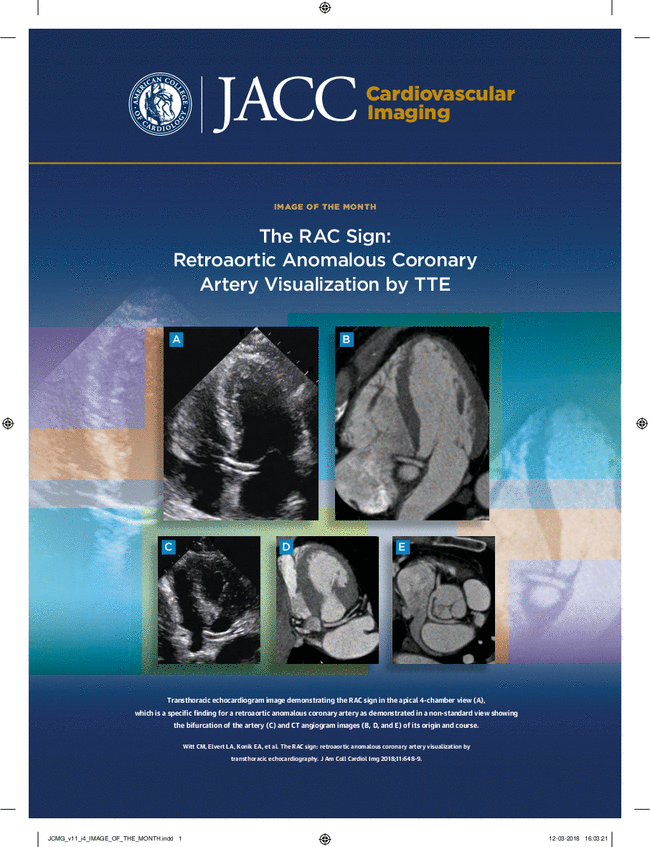接受经导管边缘到边缘修复术的房室功能性二尖瓣反流亚型:寰枢椎畸形的次优结果。
IF 12.8
1区 医学
Q1 CARDIAC & CARDIOVASCULAR SYSTEMS
引用次数: 0
摘要
背景:心房功能性二尖瓣反流(AFMR)有两种亚型,一种以卡彭蒂耶I型为特征,另一种以卡彭蒂耶IIIb型瓣叶运动为特征:作者试图分析接受二尖瓣经导管边缘到边缘修补术(M-TEER)的AFMR亚型的超声心动图特征和预后:在接受 M-TEER 的 1047 名连续患者中,作者确定了孤立性二尖瓣环扩张(Carpentier I)患者(称为 AFMR-IAD)和以二尖瓣后叶运动受限(Carpentier IIIb)为特征的寰枢肌束缚(atriogenic hamstringing)患者(称为 AFMR-AH)。分析了超声心动图基线特征和一年内的结果:共有128名患者(12.2%)符合AFMR标准,其中75人(58.6%)被确定为AFMR-IAD,53人(41.4%)被确定为AFMR-AH。AFMR-AH 显示出更大的左心房和左心室容积、更大的二尖瓣环、更短更陡的二尖瓣后叶以及更明显的 MR(所有 P < 0.05)。98.7%(AFMR-IAD)和86.8%(AFMR-AH)的患者获得了技术成功(P = 0.009)。出院时,仅在 AFMR-AH 中观察到装置脱落(10.0%)。AFMR-IAD和AFMR-AH患者中,分别有95.6%和78.6%的患者在30天(P = 0.009)和1年(P = 0.038)时达到MR≤II,分别为93.0%和74.1%。AFMR-AH与30天后的手术失败(OR:1.17 [95% CI:1.00-1.38];P = 0.045)(43.4% vs 24.0%;P = 0.023)和1年后的全因死亡率(HR:2.54 [95% CI:1.09-5.91];P = 0.031)(77% vs 92%,Kaplan-Meier估计的1年生存率;P = 0.017)有关:结论:与 AFMR-IAD 相比,AFMR-AH 在 M-TEER 后显示出更差的手术和临床结果。结论:与AFMR-IAD相比,AFMR-AH在M-TEER术后的手术和临床预后更差,因此需要警惕这种病变,并考虑采用其他二尖瓣疗法。本文章由计算机程序翻译,如有差异,请以英文原文为准。
Atrial Functional Mitral Regurgitation Subtypes Undergoing Transcatheter Edge-to-Edge Repair
Background
Two subtypes of atrial functional mitral regurgitation (AFMR) have been described, one is characterized by Carpentier type I and the other by Carpentier type IIIb leaflet motion.
Objectives
The authors sought to analyze echocardiographic characteristics and outcomes of AFMR subtypes undergoing mitral valve transcatheter edge-to-edge repair (M-TEER).
Methods
Of 1,047 consecutive patients who underwent M-TEER, the authors identified those with isolated mitral annulus dilation (Carpentier I), termed AFMR-IAD, and those with atriogenic hamstringing characterized by restricted posterior mitral leaflet motion (Carpentier IIIb), termed AFMR-AH. Echocardiographic baseline characteristics and outcomes up to 1-year were analyzed.
Results
A total of 128 patients (12.2%) met AFMR criteria; 75 (58.6%) were identified as AFMR-IAD and 53 (41.4%) as AFMR-AH. AFMR-AH displayed greater left atrial and left ventricular volumes, greater mitral annulus, shorter and steeper posterior mitral leaflet, and more pronounced MR (all P < 0.05). Technical success was achieved in 98.7% (AFMR-IAD) and 86.8% (AFMR-AH) of patients (P = 0.009). At discharge, device detachments were exclusively observed in AFMR-AH (10.0%). MR ≤II was achieved in 95.6% and 78.6% at 30 days (P = 0.009) and in 93.0% and 74.1% at 1 year (P = 0.038) in patients with AFMR-IAD and AFMR-AH, respectively. AFMR-AH was associated with procedural failure (OR: 1.17 [95% CI: 1.00-1.38]; P = 0.045) at 30 days (43.4% vs 24.0%; P = 0.023) and all-cause mortality (HR: 2.54 [95% CI: 1.09-5.91]; P = 0.031) at 1 year (77% vs 92%, Kaplan-Meier estimated 1-year survival; P = 0.017).
Conclusions
AFMR-AH shows worse procedural and clinical outcomes following M-TEER than AFMR-IAD. Thus, vigilance regarding this pathology is warranted and alternative mitral valve therapies might need to be considered.
求助全文
通过发布文献求助,成功后即可免费获取论文全文。
去求助
来源期刊

JACC. Cardiovascular imaging
CARDIAC & CARDIOVASCULAR SYSTEMS-RADIOLOGY, NUCLEAR MEDICINE & MEDICAL IMAGING
CiteScore
24.90
自引率
5.70%
发文量
330
审稿时长
4-8 weeks
期刊介绍:
JACC: Cardiovascular Imaging, part of the prestigious Journal of the American College of Cardiology (JACC) family, offers readers a comprehensive perspective on all aspects of cardiovascular imaging. This specialist journal covers original clinical research on both non-invasive and invasive imaging techniques, including echocardiography, CT, CMR, nuclear, optical imaging, and cine-angiography.
JACC. Cardiovascular imaging highlights advances in basic science and molecular imaging that are expected to significantly impact clinical practice in the next decade. This influence encompasses improvements in diagnostic performance, enhanced understanding of the pathogenetic basis of diseases, and advancements in therapy.
In addition to cutting-edge research,the content of JACC: Cardiovascular Imaging emphasizes practical aspects for the practicing cardiologist, including advocacy and practice management.The journal also features state-of-the-art reviews, ensuring a well-rounded and insightful resource for professionals in the field of cardiovascular imaging.
 求助内容:
求助内容: 应助结果提醒方式:
应助结果提醒方式:


